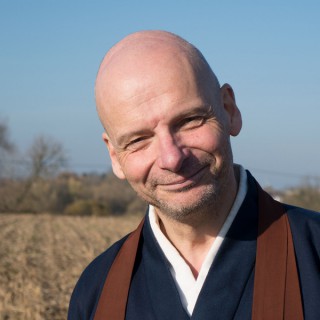Podcasts about tv buddha
- 5PODCASTS
- 5EPISODES
- 30mAVG DURATION
- ?INFREQUENT EPISODES
- Sep 18, 2024LATEST
POPULARITY
Latest podcast episodes about tv buddha
In episode 26 of Locust Radio, Adam Turl is joined by Omnia Sol – a comic, video, and sound artist in Chicago. This episode is part of a series of interviews of current and former Locust Collective members and contributors. This series is being conducted as research for a future book by Adam Turl on the conceptual and aesthetic strategies of the collective in the context of a cybernetic Anthropocene. The featured closing music / sound art, “Overview” and “Wilhelmina,” are from Omnia Sol's forthcoming vs. Megalon. Check out their bandcamp. Locust Radio hosts include Adam Turl, Laura Fair-Schulz, and Tish Turl. Producers include Alexander Billet, Omnia Sol, and Adam Turl. Related texts and topics: Arte Povera; Walter Benjamin, “The Work of Art in the Age of Mechanical Reproduction” (1936); Michael Betancourt, Glitch Art in Theory and Practice (2017); William Blake; Claire Bishop, Disordered Attention: How We Look at Art and Performance Today (2024); Stan Brakhage ; Bertolt Brecht - see also Brecht, “A Short Organum for the Theater” (1948); Cybernetic Culture Research Unit; Mark Fisher, “Acid Communism (Unfinished Introduction)”; Ben Davis, Art in the After-Culture: Capitalist Crisis and Cultural Strategy (2022); Scott Dikkers, Jim's Journal (comic by the co-founder of the Onion); Dollar Art House; Mark Fisher, Capitalist Realism: Is There No Alternative? (2009); Mark Fisher, Ghosts of My Life: Writings on Depression, Hauntology and Lost Futures (2014); Mark Fisher, K-Punk: The Collected and Unpublished Writings of Mark Fisher (2019); Flicker Films; Fully Automated Luxury (Gay) Space Communism; Glitch Art; Jean-Luc Godard; Grand Upright Music, Ltd. vs. Warner Brothers Records (Biz Markie) (1991); William Hogarth; Tamara Kneese, Death Glitch: How Techno-Solutionism Fails Us in This Life and Beyond (2023); Holly Lewis, “Toward AI Realism,” Spectre (2024); Karl Marx, The Communist Manifesto (1848); Nam June Paik and TV Buddha; Harvey Pekar (comic artist); Gregory Sholette, Dark Matter: Art and Politics in the Age of Enterprise Culture (2010); Grafton Tanner, Babbling Corpse: Vaporwave and the Commodification of Ghosts (2016); TOSAS (The Omnia Sol Art Show); Nat Turner; Wildstyle and Style Wars (1983 film); YOVOZAL, “My Thoughts about AI and art,” YouTube video (2024)
Hokyo Zanmai deel 7 - De Boeddha in de spiegel
Verzen uit de "Hokyo Zanmai" ("De samadhi van de kostbare spiegel" van meester Tozan, China - 9e eeuw) die in dit deel besproken worden: "Al behoort het niet tot de samsara is het niet zonder woorden. Het is als kijken in de kostbare spiegel vorm en reflectie kijken elkaar aan. Je bent haar niet. Maar die reflectie ben jij." Credit image: TV-Buddha (1974) van Nam June Paik
"From A-Music to TV Buddha," Edith Decker-Phillips, scholar and author of Paik Video
Nam June Paik was a pioneer of video installation in the early 1960s. Associated with the international conceptual movement Fluxus, Paik regularly collaborated with other Fluxus artists such as Joseph Beuys and George Maciunas. In 1976 John Kaldor invited Paik and his collaborator, the cellist Charlotte Moorman to create a Kaldor Public Art Project in Australia. As part of the project Moorman played the ‘TV cello’. Made from three televisions removed from their sets so that their inner workings can be seen, with an attached cello bridge, tailpiece and strings forming a cello-like instrument. ‘TV Buddha’ was also made in Sydney in 1976 using an old wooden Maitreya (Buddha of the future) from the Kaldor collection. ‘Kaldor candle’ was made in 1996 for John Kaldor, who remained friends with Paik until the artist’s death in 2006. Both ‘TV Buddha’ and ‘Kaldor candle’ employ a conceptual use of video – first developed by Paik – in which a camera and a monitor loop in real time, blurring the object–subject distinction. This feedback idea was used by leading conceptual artists in the 1970s, including Bill Viola, Dan Graham and Mike Parr.
Nam June Paik was a pioneer of video installation in the early 1960s. Associated with the international conceptual movement Fluxus, Paik regularly collaborated with other Fluxus artists such as Joseph Beuys and George Maciunas. In 1976 John Kaldor invited Paik and his collaborator, the cellist Charlotte Moorman to create a Kaldor Public Art Project in Australia. As part of the project Moorman played the ‘TV cello’. Made from three televisions removed from their sets so that their inner workings can be seen, with an attached cello bridge, tailpiece and strings forming a cello-like instrument. ‘TV Buddha’ was also made in Sydney in 1976 using an old wooden Maitreya (Buddha of the future) from the Kaldor collection. ‘Kaldor candle’ was made in 1996 for John Kaldor, who remained friends with Paik until the artist’s death in 2006. Both ‘TV Buddha’ and ‘Kaldor candle’ employ a conceptual use of video – first developed by Paik – in which a camera and a monitor loop in real time, blurring the object–subject distinction. This feedback idea was used by leading conceptual artists in the 1970s, including Bill Viola, Dan Graham and Mike Parr.








